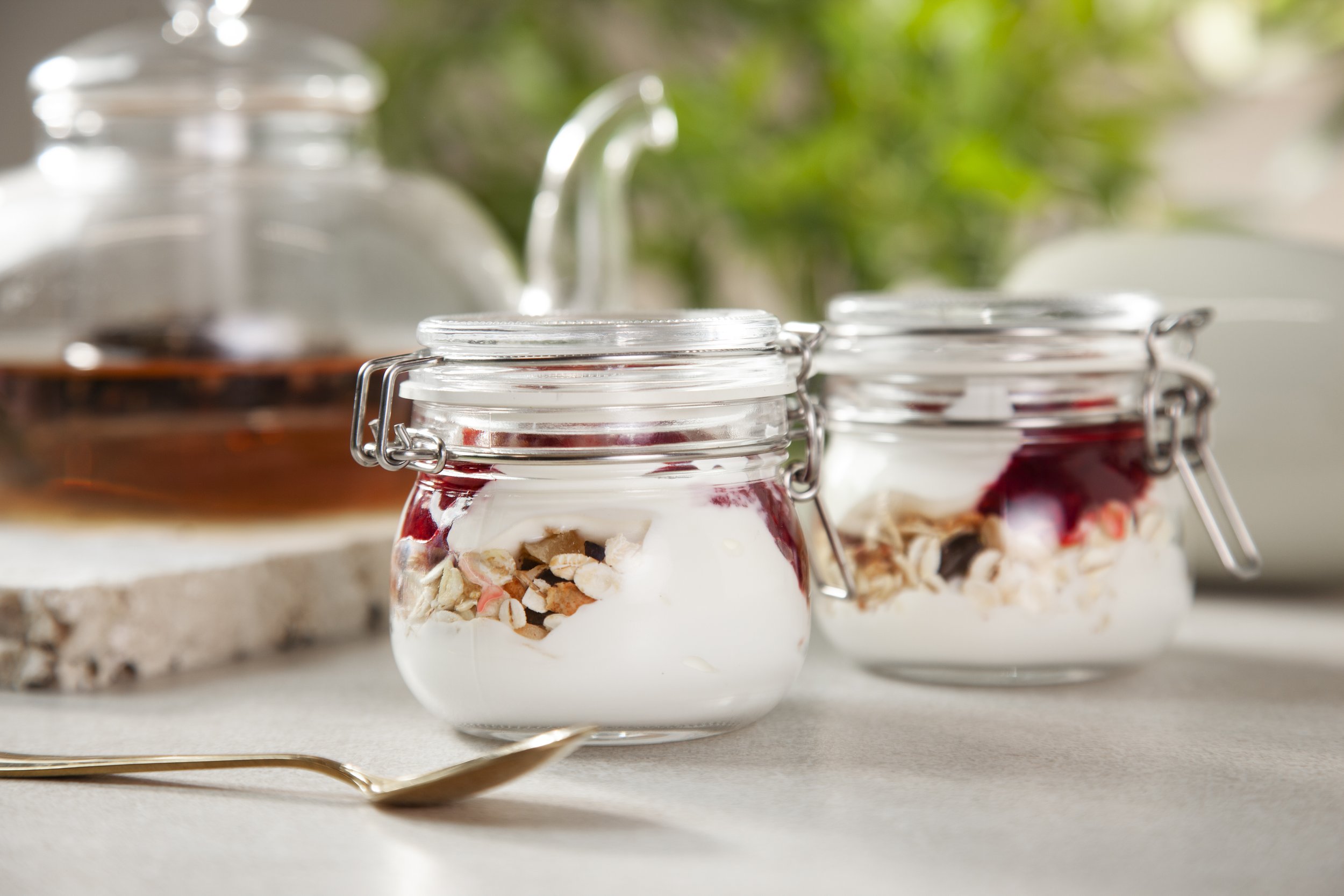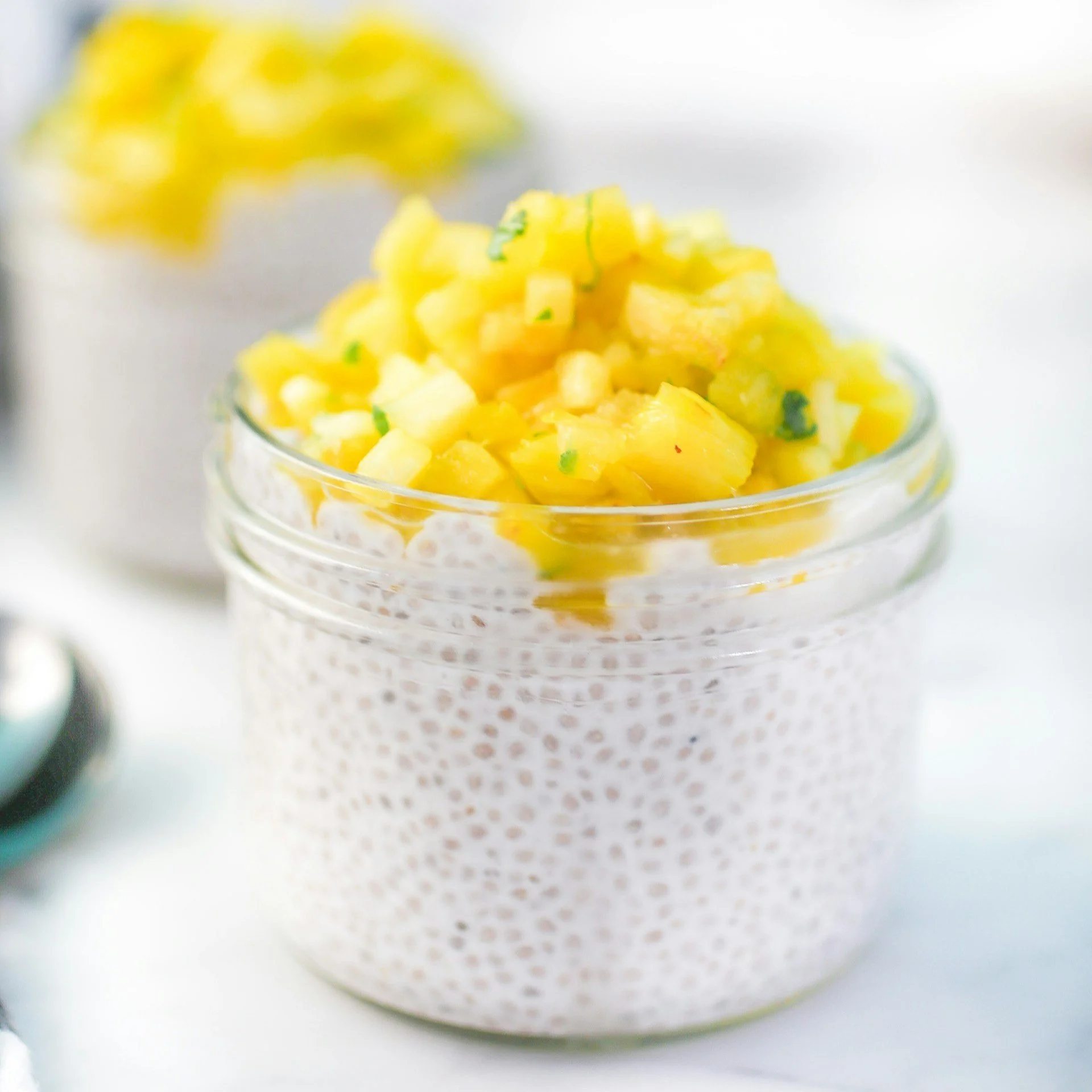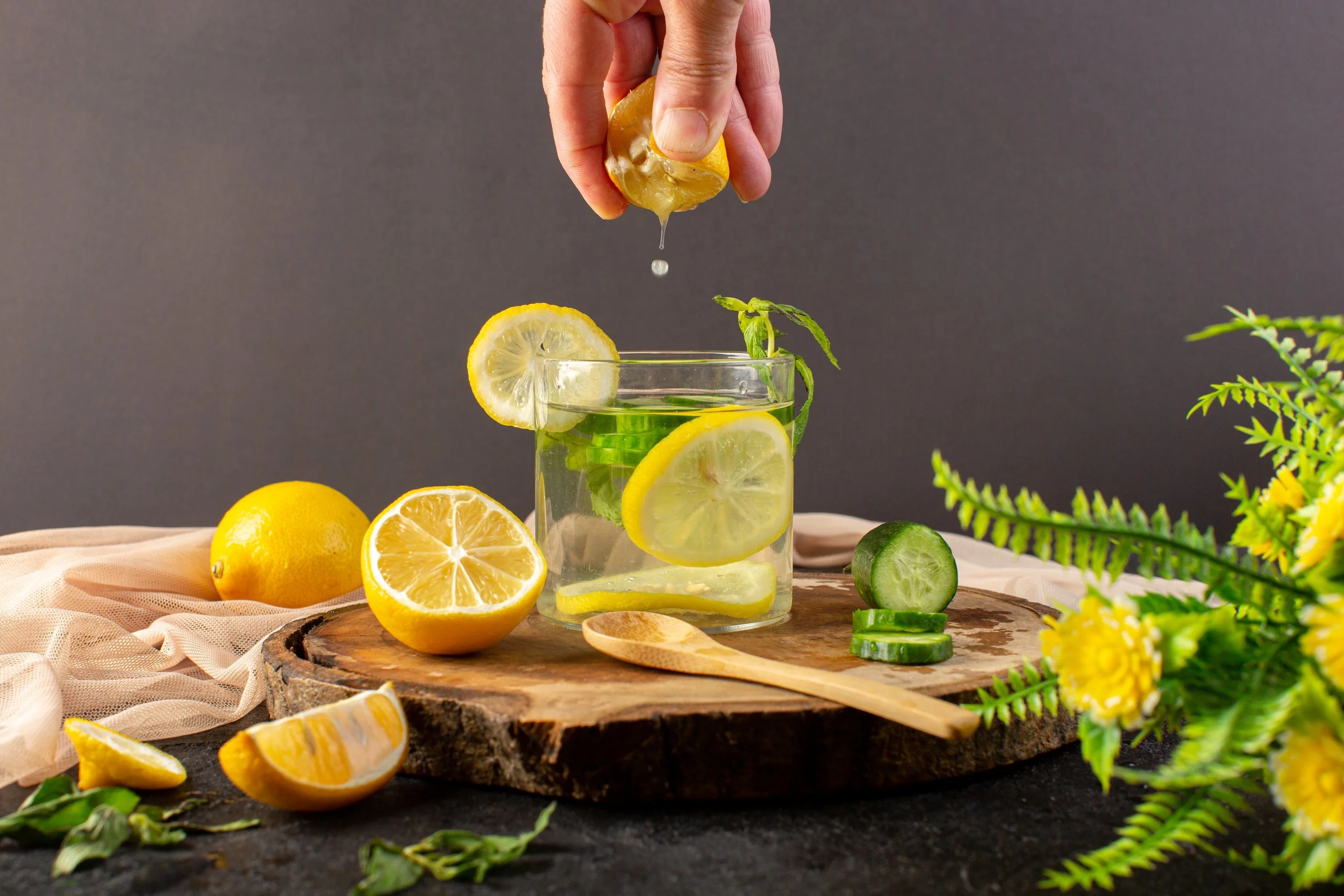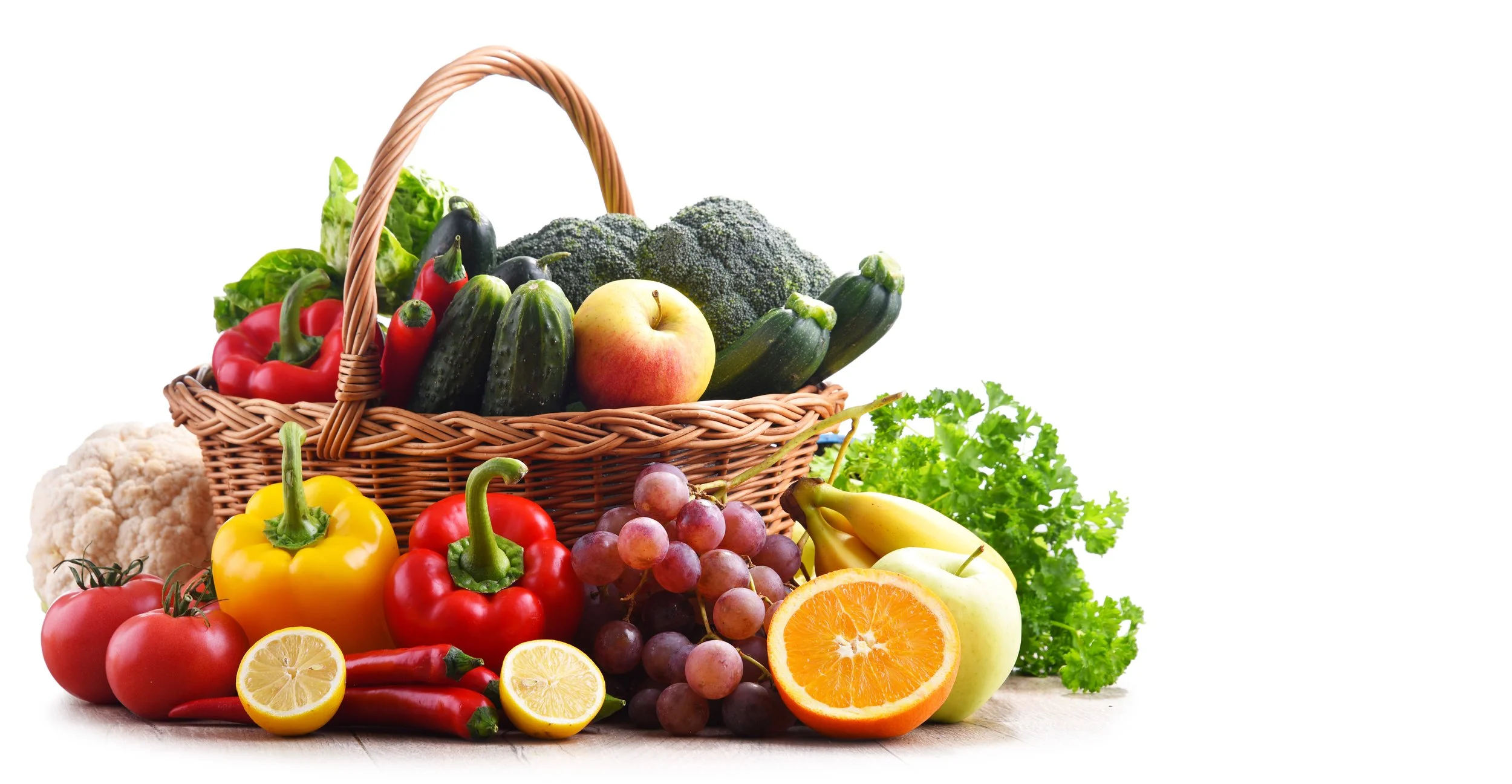The Summer Slump Survival Guide
For me, summer doesn’t truly arrive until the temperature hits at least 85 degrees! I absolutely love the sun and the heat. Maybe it’s a habit from my restaurant days—standing by the stove, sweat pouring down, learning to adapt and just live with it. Still, those long, hot July and August days can wear me down, and I notice my eating and daily habits shift as I try to stay comfortable and enjoy the season.
I’m sure I’m not alone in this. Summer’s heat can drain our energy, throw off our routines, and leave us feeling worn out—even when all we want is to soak up the sunshine and have fun.
But here’s the good news: the summer slump is completely normal, and you can beat it. With a few simple meal ideas and easy lifestyle tweaks, you can stay energized, refreshed, and ready to make the most of these bright, sunny months!
Why the Summer Slump Happens
It’s basic science! When the temperature rises, our bodies work harder to keep our internal temperature steady at around 98.6°F—a process called thermoregulation. The hypothalamus, a part of the brain, acts like the body’s thermostat. It constantly gets signals from sensors all over the body and triggers cooling responses when we get hot.
The main ways our body cools down are sweating and vasodilation. Sweat is our natural air-conditioning system—when it evaporates from the skin, it carries heat away and cools us off. Vasodilation means our blood vessels widen, sending more blood to the skin’s surface so heat can escape into the air. That’s why you might notice your face getting a little flushed on hot days. These cooling processes work best when sweat can evaporate easily (think lower humidity) and there’s enough airflow to carry the heat away.
This extra effort our bodies make to keep cool increases energy needs and can leave us feeling tired and a bit out of sorts.
Higher Energy Demand: Producing sweat and circulating blood to the skin are active processes that use extra calories (though not enough to significantly impact weight loss). Research shows that the cost of keeping body temperature elevated (or maintaining coolness during heat) can account for 4–16% of your total daily energy expenditure, depending on activity and environmental temperature.
Hydration Stress: Heat makes us sweat more, which means we lose water and electrolytes. If not replaced, this can lead to dehydration, which impacts both physical and mental performance.
Muscle Fatigue: When more blood is diverted to the skin for cooling, less may be available to working muscles or internal organs, contributing to feelings of tiredness or reduced stamina.
Other factors contribute too.
Sleep disruptions: Longer daylight hours mean you’re likely staying up later — whether you realize it or not. More evening light suppresses melatonin, the hormone that helps you wind down and fall asleep. That can push your bedtime later without you meaning to, and disrupt your natural sleep-wake cycle. Warmer nights make it harder for your body to cool down — and cooling down is a key part of falling into deep, restorative sleep. If your room is too hot, you might toss and turn or wake more often throughout the night.
Lighter (but not always nutritious) eating: In summer, many of us naturally eat lighter — which can be great. But sometimes, “lighter” turns into less nourishing, and that’s when problems start. You might nibble on fruit or grab snacks here and there, but without balanced meals, your blood sugar can spike and crash — leaving you tired and irritable, or craving sugar and caffeine. Also when it’s too hot to cook, we tend to go for convenience — but those foods are often low in protein, fiber, and key minerals that support steady energy and hydration. While a bowl of greens is refreshing, without some healthy fats, protein, or complex carbs, it won’t keep you full or fueled for long.
Recognizing these patterns is the first step to beating the slump.
Stay Cool, Stay Fueled: Easy Meal Strategies
When it’s hot outside, heavy meals and complicated cooking just don’t feel appealing. But skipping meals or relying on snacks and takeout can drain your energy even more. The key is to eat light but balanced — with foods that hydrate, nourish, and help regulate blood sugar.
Don’t Skip Breakfast - Even If You’re Not Hungry
Hot mornings can dull your appetite, but a smart, easy breakfast gives your body the fuel it needs to start strong. Try this:
Overnight oats with your favorite milk, chia seeds, berries, and a dollop of nut butter — cool, creamy, and sustaining. Try Apple Pie Overnight Oats.
Green smoothie with spinach, frozen banana, avocado, plant-based protein, and a spoonful of flax or hemp seeds. Enjoy Raspberry Matcha Spinach Smoothie.
Savory option: Pre-cooked quinoa tossed with chopped tomato, cucumber, and a soft-boiled egg — like a breakfast grain salad. Start with this Mexican Spiced Quinoa and replace the chicken thighs with fresh eggs.
💡 Tip: Prep the night before and store in mason jars for grab-and-go energy.
Build Lunches That Satisfy Without Weighing You Down
Midday meals should be cooling, hydrating, and well-rounded — think produce-forward with a mix of fiber, protein, and healthy fat. Ideas to try:
Chopped summer salad with romaine, red cabbage, grilled chicken, corn, and avocado-lime chimichurri. Dress up the Cabbage Salad with Avocado-Lime Chimichurri Dressing.
Cold soba noodle bowl with edamame, shredded carrots, cucumbers, and sesame-ginger dressing. Or try Black Lentil Salad with Roasted Beets and Carrots.
Hummus wrap with roasted red peppers, arugula, shredded beets, and sunflower seeds in a sprouted grain tortilla. Swiss chard makes a tasty substitute for tortillas in Swiss Chard Wraps with Tahini Lemon Sauce.
Add a piece of seasonal fruit or a few olives for a mineral-rich boost.
Focus on Hydrating Foods
During hot weather, your body loses more fluids — not just through sweat but also through breathing and basic metabolism. While drinking water is essential, your food can also help hydrate you — especially when it’s rich in water, minerals, and fiber. Top hydrating foods to build into your meals:
Cucumbers (over 95% water!)
Lettuce, spinach, and leafy greens
Melons like watermelon, cantaloupe, and honeydew
Berries — especially strawberries and blueberries
Zucchini, tomatoes, celery, radishes
Citrus fruits and pineapple
💡 Pair hydrating produce with protein and healthy fats to help your body absorb the water more efficiently.
No-Cook or Minimal-Cook Dinners
When the heat’s on, the last thing you want is to turn on the oven. No-cook meals like these ideas come to the rescue. They’re simple, satisfying, and require little to no cooking. Try:
Mediterranean mezze plate: Hummus, tabbouleh, olives, sliced cucumbers, tomatoes, and warm pita or gluten-free crackers. Whip up the Kale & Tuna Niçoise-Style Salad shown below.
Chilled lentil salad with parsley, cherry tomatoes, lemon, and feta. Get a protein boost by adding chickpeas in Chickpea, Lentil, & Broccoli Salad with Orange Tarragon Vinaitrette.
Grill once, eat twice: Grill marinated shrimp, chicken, or tofu in the evening, then use the leftovers the next night in tacos, wraps, or on a salad. Great way to utilize leftovers from Grilled Chicken Thighs with Rhubarb & Tarragon BBQ Sauce.
💡 Bonus tip: Keep a container of cooked grains (like quinoa, farro, or brown rice) in the fridge for quick bowl-building.
Grilling outdoors is another great way to cook without heating up your kitchen.
Smart Carbs and Protein for Lasting Energy
While a pile of greens is refreshing, it won’t keep you full for long on its own. For any summer meal, aim to include:
Hydrating produce (like cucumber, melon, leafy greens, berries)
Protein (beans, eggs, tofu, grilled fish, or tempeh)
Healthy fat (avocado, tahini, seeds, olive oil)
Complex carbs (quinoa, sweet potatoes, corn, whole grains)
This combo keeps your energy steady, prevents mid-afternoon crashes, and supports your body’s natural cooling mechanisms.
Snacks That Actually Help
Snacks should hydrate, nourish, and keep blood sugar stable. Avoid ultra-sweet treats or ultra-salty processed snacks that leave you more dehydrated. Great summer snack pairings:
Watermelon cubes + a handful of pistachios
Sliced cucumber with hummus or white bean dip
Frozen banana “bites” dipped in dark chocolate and nut butter
Greek yogurt with chopped mint and berries
Chia pudding with coconut milk, topped with fresh peach slices
Smart Hydration Without the Sugar
When summer heat kicks in, staying hydrated becomes even more important — but it’s not just about drinking more water. It’s about how you hydrate, what you’re losing, and what your body needs to absorb it properly.
Sweating doesn’t just mean water loss — it also pulls out electrolytes like sodium, potassium, and magnesium, which are essential for energy, muscle function, and mental clarity. Without replenishing them, even if you’re drinking tons of water, you might still feel fatigued, dizzy, or foggy.
Water alone isn’t always enough. Plain water is vital, but if you’re drinking it in large amounts without adding in minerals or electrolytes, you could actually dilute your body’s mineral balance — which can lead to further fatigue or cramping. And commercial sports drinks? They often contain loads of added sugar, artificial colors, and unnecessary ingredients — not what your body truly needs when you’re focused on natural wellness.
Here are simple, nourishing ways to upgrade your hydration — no sugar bomb required:
Infused Waters with a Purpose
Skip the store-bought vitamin waters and make your own refreshing infusions that support hydration and taste amazing. Try these combos:
Cucumber + Mint + Lime
Strawberry + Basil
Lemon + Ginger + Sea Salt
Watermelon + Rosemary
💡 Let them steep for a few hours in the fridge and sip throughout the day for slow, steady hydration.
DIY Natural Electrolyte Drink
Make your own version of a “sports drink” that actually nourishes. Shake it up and sip post-workout or on especially hot days. Basic recipe:
2 cups water or coconut water
Juice of ½ lemon or lime
Small pinch of sea salt or Himalayan salt
½ tsp honey or maple syrup (optional)
Iced Herbal Teas
Naturally caffeine-free herbal teas are a great way to hydrate and support your body’s stress response and digestion. Cooling teas to try:
Peppermint (soothing and slightly sweet)
Lemon balm (calming for the nervous system)
Hibiscus (tart and packed with antioxidants)
Rooibos (naturally sweet and mineral-rich)
💡 Brew strong, chill, and serve over ice with a slice of citrus.
Don’t wait until you feel thirsty. Sip consistently — especially:
First thing in the morning
Mid-morning and mid-afternoon
Before, during, and after physical activity
With and between meals
Movement That Boosts Energy (Not Drains It)
It might feel counterintuitive, but gentle movement can actually help restore energy, not deplete it — even in the heat. The key is choosing the right type of activity, at the right time of day, and listening to your body’s cues.
When it’s hot, our bodies work harder to regulate temperature, which means high-intensity workouts can lead to burnout, overheating, or even dehydration. Instead of pushing through, pivot to restorative movement that helps circulation, mood, and lymphatic flow without overloading your system.
Move Early (or Late) to Beat the Heat
Early mornings and early evenings are your golden windows for outdoor movement. Temperatures are cooler, and the light is softer — making it more pleasant to get moving without overheating. Try:
A 20–30 minute walk before breakfast (bonus: it supports circadian rhythm)
Light stretching or yoga on your porch or in a shaded spot
A relaxed bike ride around your neighborhood as the sun sets
💡 Layer in mindfulness: Leave your headphones at home and notice what’s blooming, how the air feels, or what sounds you hear.
Gentle Workouts That Energize
You don’t need to sweat buckets to feel strong and refreshed. Gentle, steady movement boosts circulation, lifts mood, and supports detoxification — without spiking your body temperature. Options that work well in summer:
Gentle yoga or Pilates (look for cooling, floor-based flows)
Qi Gong or Tai Chi (great for focus and breath)
Mini resistance sessions with bands or bodyweight (in a cool indoor space)
Rebounding (mini trampoline) for lymphatic flow (just 5–10 minutes is powerful)
💡 Tip: Keep your space cool and dim. Use a fan, cool towel, or mist bottle to stay refreshed.
Micro-movements Throughout the Day
If energy is low or your schedule is full, try “movement snacks” — short bursts of activity that gently re-energize. Easy ways to sneak movement in:
Stretch or do a yoga pose while your tea steeps
Do a kitchen dance while prepping dinner
Roll your shoulders or neck while on hold or in between calls
Walk a few laps around your house or yard after lunch
Just 5 minutes can reset your focus, boost circulation, and prevent that afternoon slump.
Here’s something many people don’t realize: Gentle movement actually helps your body stay cool and hydrated. When your circulation improves, your skin and organs can regulate temperature more efficiently. Plus, low-impact movement encourages natural thirst — which helps keep you better hydrated throughout the day.
Bottom Line: Think Flow, Not Force Summer is a great time to move with intention and ease, not intensity. You don’t need to push hard to feel good — you just need to move consistently, gently, and in a way that supports your natural energy rhythm.
Better Sleep = Better Energy
You might expect summer to be all about rest and relaxation — but for many people, sleep actually gets worse during the warmer months. And when your sleep suffers, everything else follows: energy dips, cravings spike, mental clarity fades, and moods can swing.
There are a few reasons why we struggle to sleep in the summer. First, longer daylight hours disrupts your body processes. More daylight means your body produces less melatonin, the hormone that helps you wind down and fall asleep. Late-evening light exposure (especially from screens or bright rooms) tricks your brain into thinking it’s still daytime. Additionally, when the nights are warmer it’s harder to fall and stay asleep. Your body needs to cool down in order to fall into deep, restorative sleep. But if your bedroom stays warm (above 70°F/21°C), your body struggles to reach its optimal sleep temperature. Finally, the typically irregular summer schedules provide inconsistent cues. Summer travel, later dinners, or irregular routines can throw off your circadian rhythm — your body’s internal clock — making it harder to get quality sleep night after night.
Here are a few small shifts that can have a big impact — and they’re all doable without pills, gimmicks, or expensive gadgets.
Dim the Lights After Dinner
Start signaling to your body that it's time to wind down by reducing light exposure in the evening. This helps your brain increase melatonin production.
Use soft, warm lighting after sunset (think: lamps instead of overheads).
Avoid bright screens at least an hour before bed, or use blue light filters.
Try blue-light-blocking glasses if screen use is unavoidable.
💡 Pro tip: Step outside into the evening light for a natural “sunset cue” to your nervous system.
Cool Your Body Down Before Bed
Help your core temperature drop — one of the most important signals for deep sleep.
Take a cool (not cold) shower 30 minutes before bed.
Use cotton or linen sheets and breathable pajamas.
Place a cold water bottle or rice pack by your feet (your extremities help release heat).
Keep your room as cool and dark as possible — ideal sleep temp is 65–68°F (18–20°C).
💡 Use a fan for white noise and air circulation if A/C isn’t available.
Use Herbal Sleep Support
Nature offers calming allies that can help you unwind without grogginess.
Magnesium-rich snacks: A small banana, pumpkin seeds, or yogurt with tart cherry.
Herbal teas: Chamomile, lemon balm, or passionflower are all calming and can be part of a wind-down ritual.
Lavender oil: Diffuse or place a drop on your pillow to support relaxation
Create a Wind-Down Routine (That Feels Good)
Consistency sends a strong message to your nervous system. Try creating a 15- to 30-minute evening ritual that helps you shift gears. Ideas to include:
Light stretching or gentle yoga
Journaling or gratitude writing
Reading (real books or e-readers with night mode)
Listening to calming music or a sleep meditation
💡 Keep lights low, screens off, and pace slow.
Use Tools to Support Sleep Quality
You don’t need a full bedroom makeover — just a few simple tools can help.
Sleep mask to block early light and promote deeper rest (especially useful in the summer!)
Blackout curtains to prevent early sunrise or late sunsets from interfering with sleep
White noise machine or fan to block environmental noise
Calm a Busy Mind If your brain’s still buzzing at bedtime, try a few gentle techniques to settle your thoughts:
4-7-8 breathing (inhale 4, hold 7, exhale 8)
Guided body scan or progressive muscle relaxation
Keep a notepad by your bed to “brain dump” any thoughts or to-dos that might be keeping you awake
Final Sleep Wisdom: Stick to a Rhythm Try to go to bed and wake up around the same time every day — even on weekends or during summer travel. Your body thrives on rhythm, and regular sleep/wake cues help regulate hormones, appetite, and energy naturally.
Mini Rituals, Big Results
When energy feels low and your schedule’s a bit off, it’s easy to push self-care to the bottom of the list. But sometimes the smallest rituals — done consistently — are the ones that shift how we feel the most. Think of these actions as tiny anchors that help you stay steady through the heat and the hustle of summer.
Morning Grounding Rituals Start your day with intention, not just to-do lists.
Hydrate first: Before coffee, drink a glass of water with lemon or cucumber to rehydrate and gently wake your digestion.
Set an intention: Write down a word or short phrase that captures how you want to feel or show up today. (Examples: “Calm focus,” “Ease,” “Nourished.”)
🌿 Bonus: A quick stretch or a few deep belly breaths can help you feel more grounded and centered before the day takes over.
Midday Mini-Reset A simple pause midday can prevent that afternoon slump and reconnect you with your body.
Take a 5-minute screen break: Step outside, move, or just breathe deeply.
Reset your nervous system: Try splashing cool water on your face to refresh and refocus.
💡 Ask yourself: “What do I need right now?” Then give yourself permission to receive it.
Evening Wind-Down Ritual Transition from doing to resting with a routine that helps you unplug and prepare for deeper sleep.
Keep it simple and sensory: Lighting a candle, playing calming music, using lavender oil, or slipping into cozy pajamas all help shift your nervous system into “rest” mode.
Reflect on one small win from your day. This keeps you connected to progress, even on messy or hard days.
🌘 Even if your day felt scattered or unproductive, give yourself the gift of stillness and softness at the end.
Be Gentle with Yourself One of the most powerful things you can do — especially when energy is low or life feels out of sync — is to simply be kind to yourself.
Didn’t check everything off your list? That’s okay.
Missed your morning routine? You can start again — any time of day.
Remember, progress doesn’t come from perfection. It comes from showing up for yourself with compassion and consistency. So give yourself a break. Rest when you need to. Nourish when you can. Celebrate the small things — because they really do matter.
Summer Squash Salad with Lemon & Herb Dressing
This chilled Summer Squash Salad with Lemon & Herb Dressing is crisp, light, and bursting with bright flavor. Thin slices of yellow squash, zucchini, and cucumber are tossed with a zesty lemon-garlic vinaigrette, fresh herbs, and a hint of Dijon for tang. It’s the perfect no-cook side dish to balance rich pastas like pesto or spaghetti, and ideal for hot days when you want something cool, refreshing, and full of garden-fresh crunch.

Summer Squash Salad with Lemon & Herbs
Ingredients
- 2 cups yellow summer squash, thinly sliced
- 2 cups zucchini, thinly sliced
- ⅓ cup red onion, very thinly sliced or shaved
- 2 cups cucumber, halved and thinly sliced
- ½ tsp sea salt
- 2 tbsp lemon juice (freshly squeezed)
- 1 tsp lemon zest
- 2 tbsp extra virgin olive oil
- 1 tbsp white wine vinegar or champagne vinegar
- 1 tsp Dijon mustard
- 1 clove garlic, minced or grated
- 1 tbsp fresh dill, chopped (or 1 tsp dried)
- 1 tbsp fresh parsley, chopped
- Freshly ground black pepper, to taste
- Optional: 1 tbsp toasted pine nuts or slivered almonds for crunch
- Optional: Crumbled feta (if not keeping it vegan)
Instructions
- Thinly slice the squash, zucchini, cucumber, and red onion using a sharp knife or mandoline for paper-thin texture. Place in a large bowl and sprinkle with sea salt. Let sit for 10 minutes to soften slightly and draw out excess moisture. Drain any liquid.
- In a small jar or bowl, whisk together lemon juice, zest, vinegar, mustard, olive oil, and garlic until emulsified. Taste and adjust acidity or seasoning if needed.
- Pour the dressing over the vegetables and toss gently to coat. Add the dill, parsley, and black pepper. Mix well. Taste and adjust the season as needed.
- Let salad rest in the fridge for 15–30 minutes before serving to allow flavors to mingle. Just before serving, sprinkle with optional nuts or feta.
Notes
- Leftovers hold well for 1-2 days.
Kale and Tuna Niçoise-Style Salad
Hearty and easy to prepare, Kale and Tuna Niçoise-Style Salad brings bold Mediterranean flavor to the everyday table. Sturdy kale stands in for lettuce and gets massaged until tender, forming the perfect base for a vibrant mix of flaky canned tuna, creamy white beans, crisp-tender green beans, juicy tomatoes, sweet bell peppers, hard-boiled eggs, and classic Niçoise olives.
It’s all tied together with a zesty Dijon-caper-herb vinaigrette that’s briny, punchy, and utterly craveable. This satisfying salad is packed with color, texture, and protein — ideal for warm-weather meals, make-ahead lunches, or a light but filling dinner. Simple to prep and endlessly nourishing, it’s a fresh twist on a French classic.

Kale and Tuna Niçoise-Style Salad
Ingredients
- For the Dressing:
- 1 tbsp olive oil
- 2 tbsp apple cider or red wine vinegar
- 2 tsp Dijon mustard
- 2 tsp capers, rinsed and chopped
- 1 small garlic clove, minced
- 2 tsp minced chives or green onion
- 3 tsp fresh chopped parsley
- ½ tsp fresh chopped tarragon (or ¼ tsp dried)
- Salt and freshly ground black pepper, to taste
- For the Salad:
- 3 cups kale, stems removed and chopped
- 1 (5–6 oz) can wild tuna, drained and flaked
- ½ cup white beans (e.g., cannellini or Great Northern), drained and rinsed
- 8–10 green beans, steamed or blanched until tender-crisp
- ½ sweet bell pepper, sliced
- 2 hard-boiled eggs, quartered
- ½ cup cherry tomatoes, halved
- ¼ cup Niçoise or Kalamata olives, quartered
Instructions
- Make the salad dressing by combining the dressing ingredients in a small bowl or jar. Whisk or shake until blended.
- Add the kale and about ⅓ of the dressing to a large bowl. Massage with your hands for 1–2 minutes until soft and deep green. This makes it easier to digest.
- Arrange the kale in bowls. Top with the remaining ingredients and drizzle with the rest of the dressing. Enjoy!
There you have it!
Here’s to keeping cool, staying nourished, and feeling like your vibrant self—no matter how high the temps climb. Be kind to yourself this summer—you’re doing great.





















